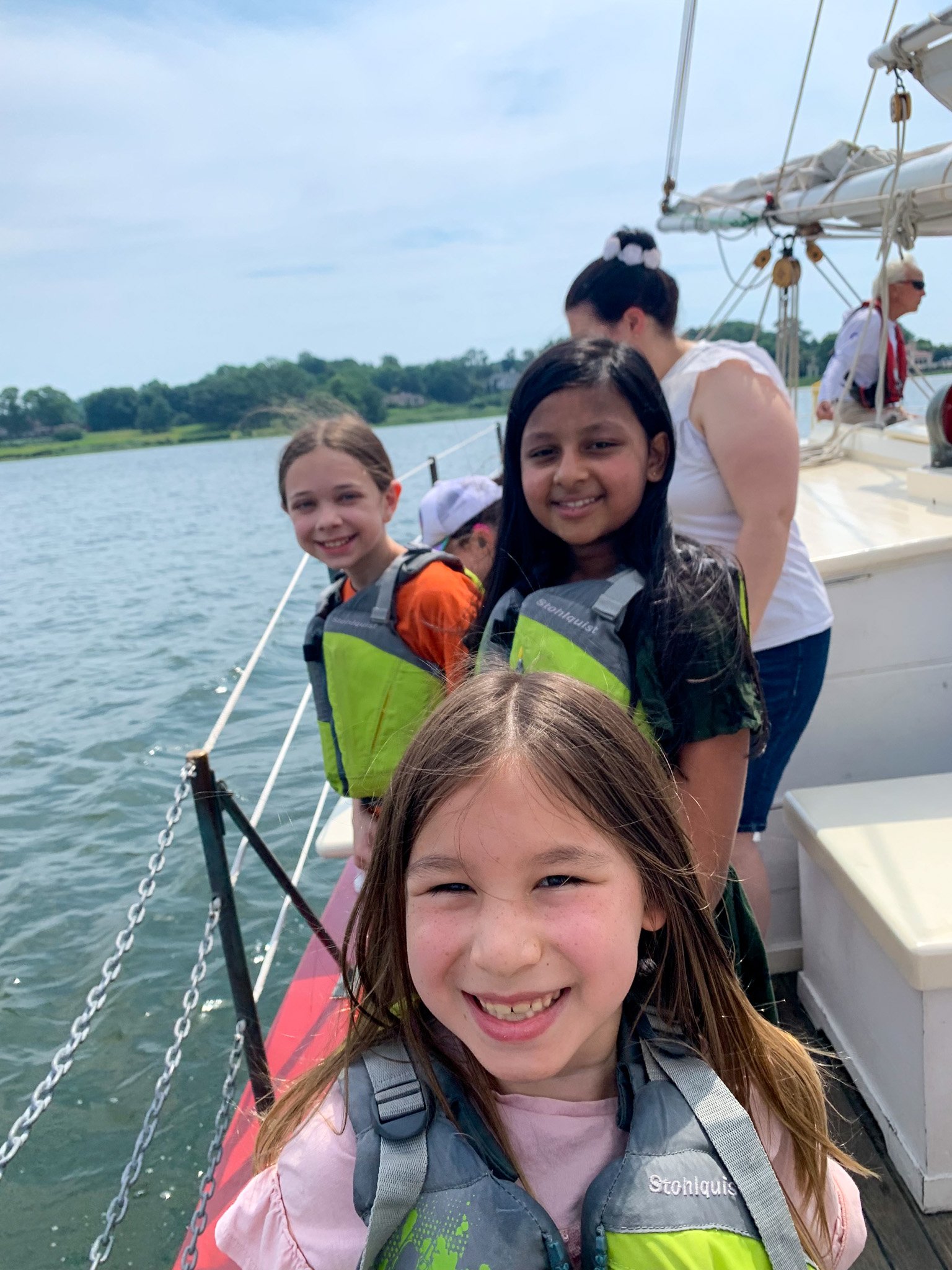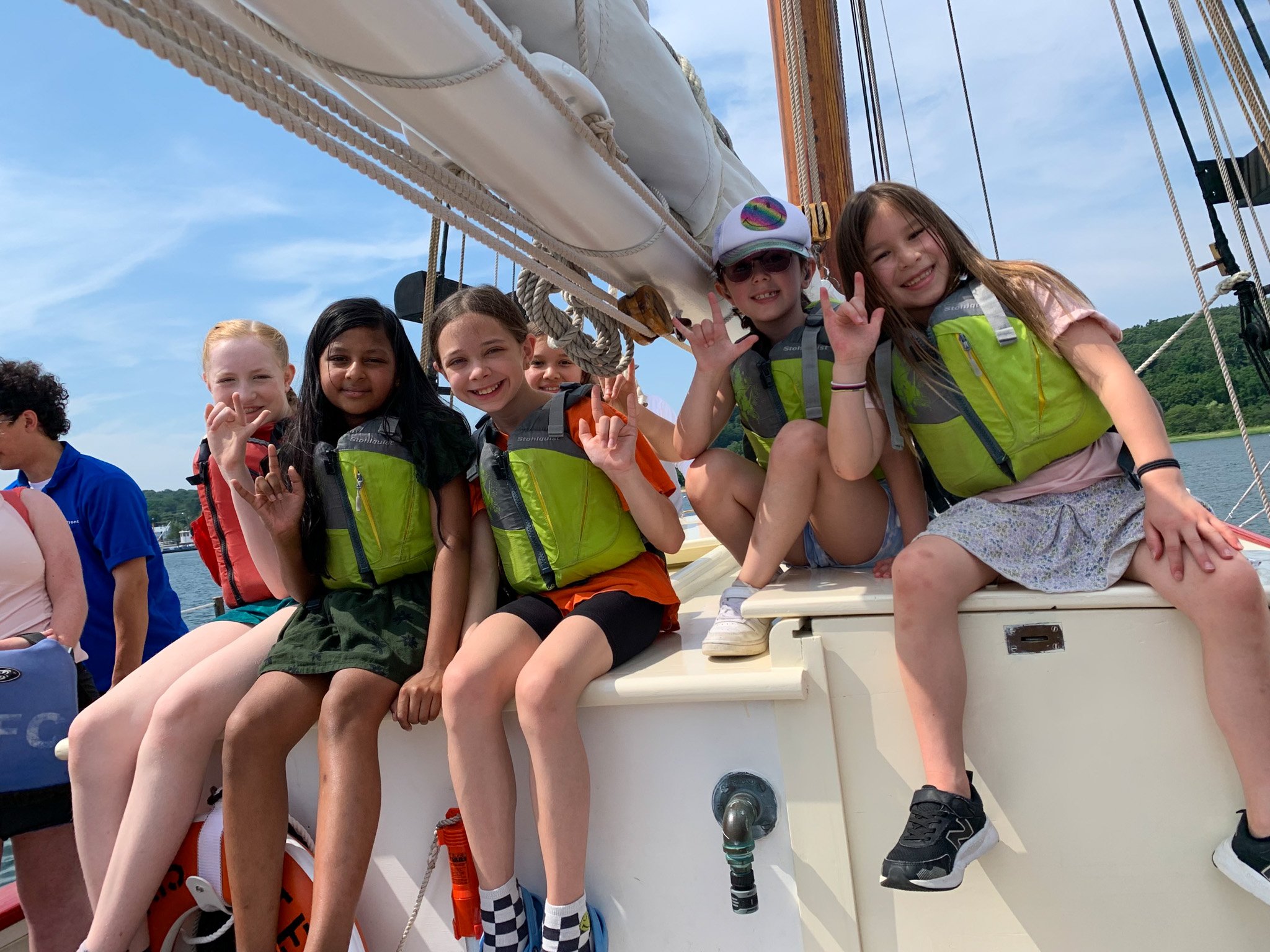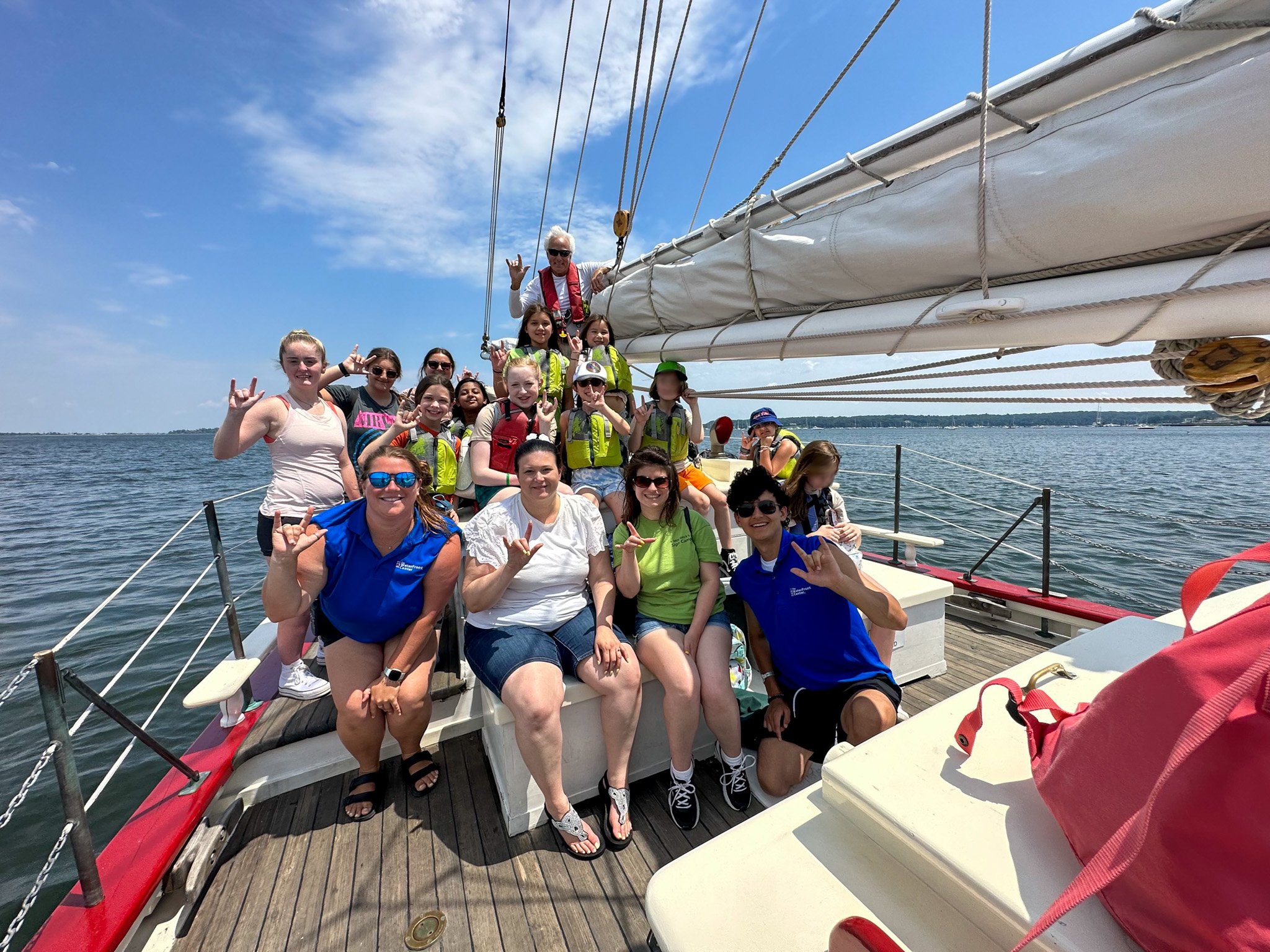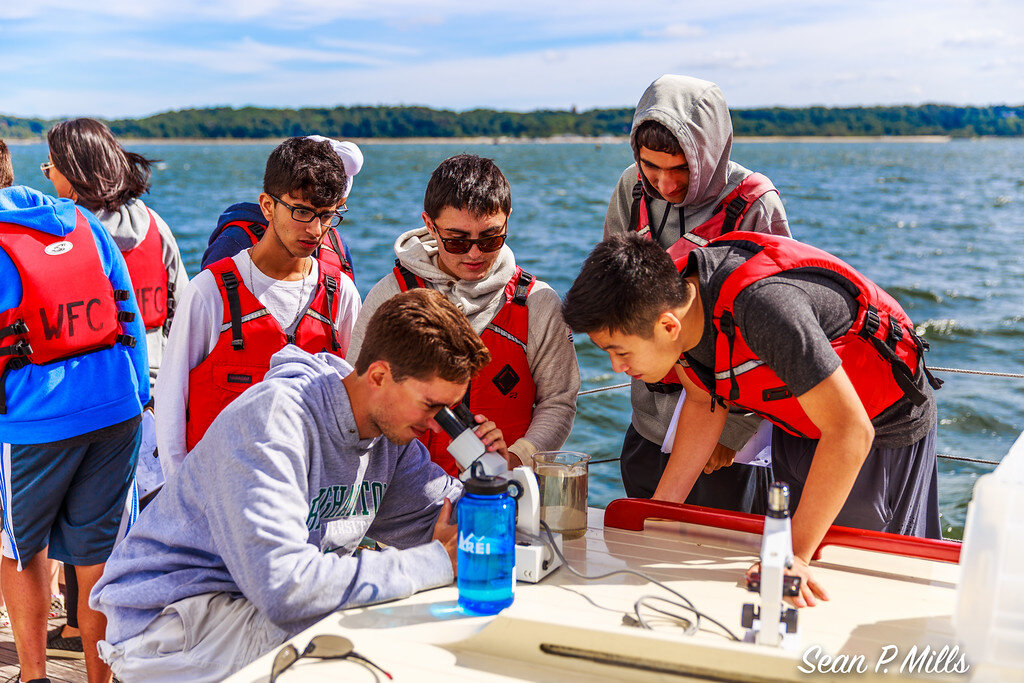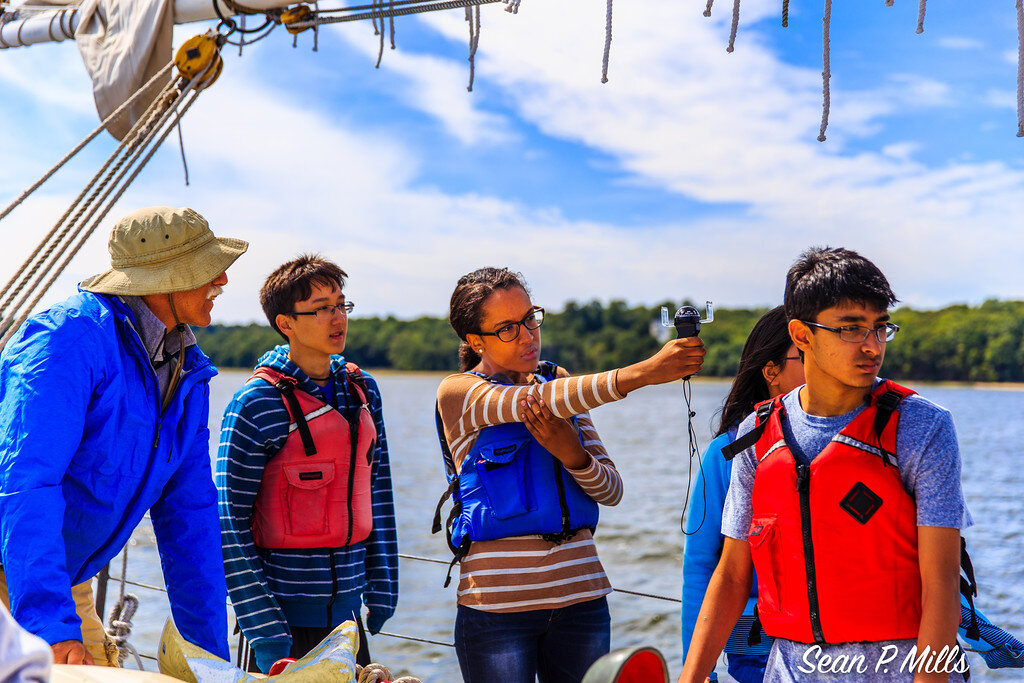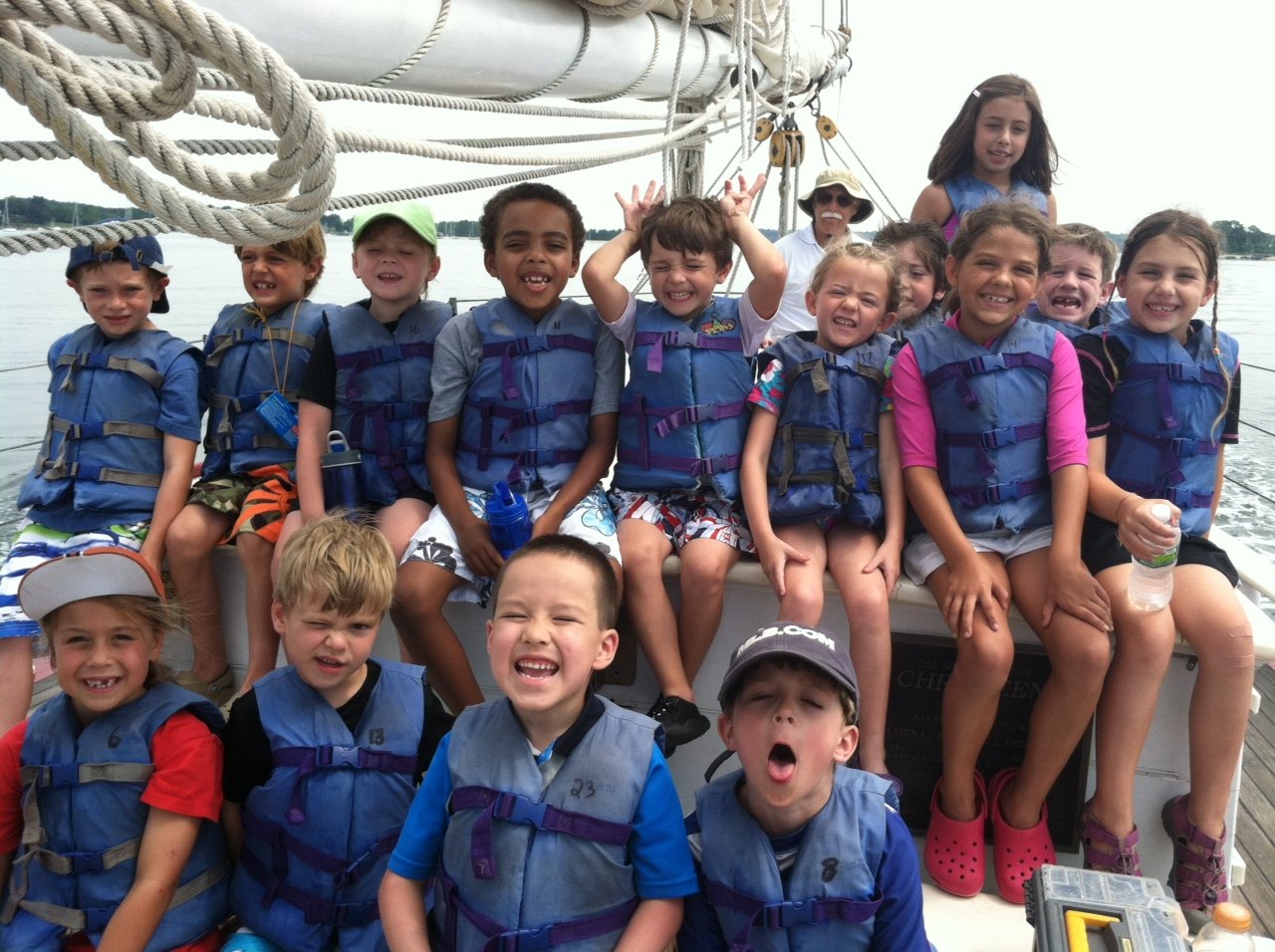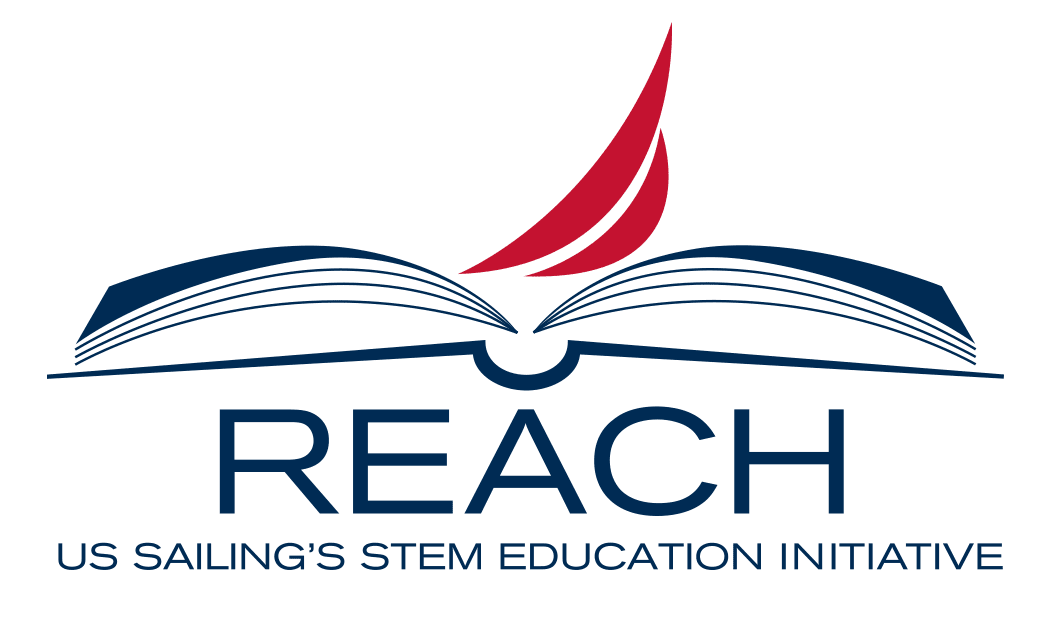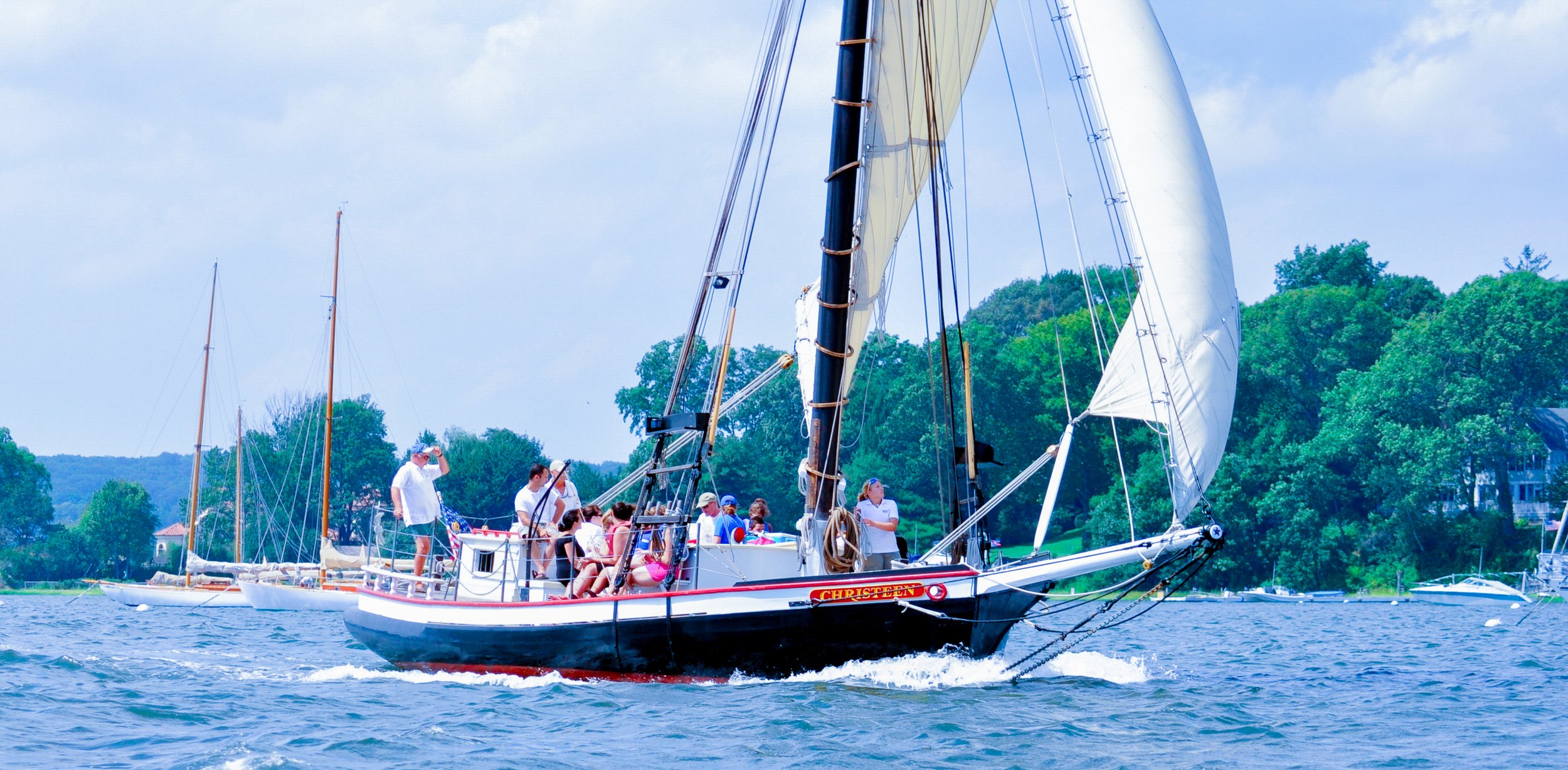
Marine Education Sails
This program takes place aboard our floating classroom, Christeen, a national historic landmark! Be part of an unforgettable marine learning experience while hoisting sails and gathering information about our local ecosystem. Whether your group wants to explore a touch tank, plankton collection, and observation or conduct higher-level water quality research, we can meet your specific group goals. (Max capacity is 20, including teachers and chaperones)
Next Generation Science Standards:
-
K-LS1-1: Use observations to describe patterns of what plants and animals need to survive
K-ESS2-2: Construct an argument supported by evidence for how plants and animals can change the environment to meet their needs
K-ESS3-1: Use a model to represent the relationship between the needs of different plants or animals and the places they live
2-LS2-2: Develop a simple model that illustrates how plants and animals depend on each other for survival
2-LS4-1: Make observations of plants and animals to compare the diversity of life in different habitats
3-LS2-1: Construct an argument that some animals form groups that help members survive
3-LS4-3: Construct an argument with evidence that in a particular habitat some organisms can survive well, some survive less well, and some cannot survive at all
3-LS1-1: Develop models to describe that organisms have unique and diverse life cycles but all have in common birth, growth, reproduction, and death.
3-LS3-1: Analyze and interpret data to provide evidence that plants and animals have traits inherited from parents and that variation of these traits exist in a group of similar organism
3-LS3-2: Use evidence to support the explanation that traits can be influenced by the environment
3-LS4-2: Use evidence to construct an explanation for how the variations in characteristics among individuals of the same species may provide advantages in surviving, finding mates, and reproducing
4-LS1-1: Construct an argument that plants and animals have internal and external structures that function to support survival, growth, behavior, and reproduction
4-LS1-2: Use a model or describe that animals receive different types of information through their senses, process the information in the brain, and respond to the information in different ways
-
MS-LS2-1: Analyze and interpret data to provide evidence for the effects of resources availability on organisms and populations of organisms in an ecosystem
MS-LS2-3: Develop a model to describe the cycling of matter and flow of energy among living and nonliving parts of the ecosystem
MS-LS2-4: Construct an argument supported by empirical evidence that changes to physical or biological components of an ecosystem affect populations
MS-LS2-2: Construct an example that predicts patterns of interactions among organisms in a variety of ecosystems
MS-LS1-4: Use argument based on empirical evidence and scientific reasoning to support an explanation for how characteristic animals behaviors and specialized plant structures affect the probability of successful reproduction of animals and plants, respectively
MS-LS1-5: Construct a scientific explanation based on evidence for how environmental and genetic factors influence the growth of organisms
MS-LS4-2: Apply scientific ideas to construct an explanation for the anatomical similarities and differences among modern organisms and between modern and fossil organisms to infer evolutionary relationships
-
HS-LS2-3: Construct and revise an explanation based on evidence for the cycling of matter and flow of energy in ecosystems
HS-LS2-5: Develop a model to illustrate the role of various processes in the cycling of carbon among the biosphere, atmosphere, hydrosphere, and geosphere
HS-LS2-1: Use mathematical and/or computational representations to support explanations of biotic and abiotic factors that affect the carrying capacity of ecosystems at different scales
HS-LS2-2: Use mathematical representations to support and revise explanations based on evidence about factors affecting biodiversity and populations in ecosystems of different scales
HS-LS2-6: Evaluate the claims, evidence, and reasoning that the complex interactions in ecosystems maintain relatively consistent numbers and types of organisms in stable conditions, but changing conditions may result in a new ecosystem.
HS-LS22-7: Evaluate the evidence for the role of group behavior on individual and species' chances to survive and reproduce
HS-LS4-1: Communicate scientific information that common ancestry and biological evolution are supported by multiple lines of empirical evidence
HS-LS4-2: Construct an explanation based on evidence that the process of evolution primarily results from four factors: (1) the potential for a species to increase in number, (2) the heritable genetic variation of individuals in a species due to mutation and sexual reproduction, (3) competition for limited resources, and (4) the proliferation of those organisms that are better able to survive and reproduce in the environment
HS-LS4-4: Construct an explanation based on evidence for how natural selection leads to adaptation of populations
HS-LS4-5: Evaluate the evidence supporting claims that changes in environmental conditions may result in (1) increases in the number of individuals of some species, (2) the emergence of new species over time, and (3) the extinction of other species
HS-ESS2-6: Develop a quantitive model to describe the cycling of carbon among the hydrosphere, atmosphere, geosphere, and biosphere.
HS-ESS2-7: Construct an argument based on evidence about the coevolution of Earth's systems and life on Earth
HS. ESS2-4: Use a model to describe how variations in the flow of energy into and out of Earth's systems result in changes in climate
HS-ESS3-5: Analyze geoscience data and the results from global climate models to make an evidence-based forecast of the current rate of global or regional climate change and associated future impacts on Earth systems
HS-ESS2-8: Evaluate data and communicate information to explain how the movement and interactions of air masses result in changes in weather conditions
HS.ESS3-6: Use a computational representation to illustrate the relationships among Earth systems and how those relationships are being modified due to human activity.
Next Generation Science Standards
Our catalog of lesson plans has various customizable options that align with Next Generation Science Standards and enable teachers to reach their curriculum goals.
The Next Generation Science Standards (NGSS) are K–12 science content standards. Standards set the expectations for what students should know and be able to do. The NGSS were developed by states to improve science education for all students. A goal for developing the NGSS was to create a set of research-based, up-to-date K–12 science standards. These standards give local educators the flexibility to design classroom learning experiences that stimulate students’ interests in science and prepares them for college, careers, and citizenship.
Below is a list of our lesson plans and activities and their NGSS categorizations.
Facilitating Place-Based-Education
Our Education Department believes in the principles of Place-Based Education (PBE) which immerse students in the local heritage, ecology, culture, landscapes, and experiences, as a foundation for study across multiple fields of study curriculum. PBE emphasizes learning through participation, unique perspectives, hands-on activities, and personal connections.
The experiences our education programs provide are unique and valuable toward building a community of stewards that will continue to ensure that Oyster Bay, New York, and the surrounding ecosystems remain an available resource for generations to come.

Pick Lessons Plans and Activities to add to your CHRISTEEN Sail
The WaterFront Center offers a variety of unique, interactive, and hands-on STEM and Marine Science activities that are applicable to our CHRISTEEN Marine Education Sail program!
Touch Tank
Introduce your students, scouts, or home group to marine animals from our local Bay. Students will observe and touch different invertebrates that inhabit the local waters of Oyster Bay and Long Island Sound. Explore different characteristics that help identify species and learn about locomotion, feeding behavior, and their habitat. Species usually consist of clams, oysters, hermit crabs, spider crabs, sea stars, and horseshoe crabs.
Next Generation Science Standards:
-
K-LS1-1: Use observations to describe patterns of what plants and animals need to survive
K-ESS2-2: Construct an argument supported by evidence for how plants and animals can change the environment to meet their needs
KESS3-1: Use a model to represent the relationship between the needs of different plants or animals and the places they live
2-LS2-2: Develop a simple model that illustrates how plants and animals depend on each other for survival
2-LS4-1: Make observations of plants and animals to compare the diversity of life in different habitats
3-LS2-1: Construct an argument that some animals form groups that help members survive
3-LS1-1: Develop models to describe that organisms have unique and diverse life cycles, but all have in common birth, growth, reproduction, and death
3-LS3-1: Analyze and interpret data to provide evidence that plants and animals have traits inherited from parents and that variations of these traits exist in a group of similar organism
3-LS3-2: Use evidence to support the explanation that traits can be influenced by the environment
3-LS4-2: Use evidence to construct an explanation for how the variations in characteristics among individuals of the same species may provide advantages in surviving, finding mates, and reproducing
4-LS1-1: Construct an argument that plants and animals have internal and external structures that function to support survival, growth, behavior, and reproduction
4-Ls1-2: Use a model or describe that animals receive different types of information through their senses, process the information in the brain, and respond to the information in different ways
-
MS-LS2-1: Analyze and interpret data to provide evidence for the effects of resource availability on organisms and populations of organisms in an ecosystem
MS-LS2-3: Develop a model to describe the cycling of matter and flow of energy among living and nonliving parts of the ecosystem
MS-LS2-4: Construct an argument supported by empirical evidence that changes to physical or biological components of an ecosystem affect populations
MS-LS2-2: Construct an example that predicts patterns of interactions among organisms in a variety of ecosystems
MS-LS1-4: Use argument based on empirical evidence and scientific reasoning to support an explanation for how characteristic animals behaviors and specialized plant structures affect the probability of successful reproduction of animals and plants, respectively
MS-LS1-5: Construct a scientific explanation based on evidence for how environmental and genetic factors influence the growth of organisms
MS-LS4-2: Apply scientific ideas to construct an explanation for the anatomical similarities and differences among modern organisms and between modern and fossil organisms to infer evolutionary relationships
-
HS-LS22-7: Evaluate the evidence for the role of group behavior on individual and species' chances to survive and reproduce
HS-LS4-1: Communicate scientific information that common ancestry and biological evolution are supported by multiple lines of empirical evidence
HS-LS4-2: Construct an explanation based on evidence that the process of evolution primarily results from four factors: (1) the potential for a species to increase in number, (2) the heritable genetic variation of individuals in a species due to mutation and sexual reproduction, (3) competition for limited resources, and (4) the proliferation of those organisms that are better able to survive and reproduce in the environment
HS-LS4-4: Construct an explanation based on evidence for how natural selection leads to adaptation of populations
HS-LS4-5: Evaluate the evidence supporting claims that changes in environmental conditions may result in (1) increases in the number of individuals of some species, (2) the emergence of new species over time, and (3) the extinction of other species
Next Generation Science Standards:
Biology of Plankton & Plankton Tow
Students will learn about the tiny organisms known as plankton that represent the base of the marine food chain. This is a comprehensive program that not only explores the importance of plankton but also includes hands on classification. Students will utilize scientific equipment to observe specimens and discuss the symbiotic relationship between plankton and water quality.
Next Generation Science Standards:
-
K-LS1-1: Use observations to describe patterns of what plants and animals need to survive
K-ESS2-2: Construct an argument supported by evidence for how plants and animals can change the environment to meet their needs
K-ESS3-1: Use a model to represent the relationship between the needs of different plants or animals and the places they live
K-ESS3-3: Communicate solutions that will reduce the impact of humans on living organisms and nonliving things in the local environment
1-LS1-2: Read texts and use media to determine patterns in the behavior of parents and offspring that help offspring
1-LS3-1: Make observations to construct an evidence-based account that some young plants and animals are similar to, but not exactly like, their parents
2-Ls2-2: Develop a simple model that illustrates how plants and animals depend on each other for survival
3-LS1-1: Develop models to describe that organisms have unique and diverse life cycles but all have in common birth, growth, reproduction, and death.
3-LS3-1: Analyze and interpret data to provide evidence that plants and animals have traits inherited from parents and that variations of these traits exist in a group of similar organism
3-LS4-2: Use evidence to construct an explanation for how the variations in characteristics among individuals of the same species may provide advantages in surviving, finding mates, and reproducing
4-LS1-1: Construct an argument that’s plants and animals have internal and external structures that function to support survival, growth, behavior, and reproduction
-
MS-LS1-1: Plan and conduct an investigation to provide evidence that living things are made of cells; either one cell or many different numbers and types of cells
MS-LS1-2: Develop and use a model to describe the function of a cell as a whole and the ways parts of cells contribute to the function
MS-LS2-1: Analyze and interpret data to provide evidence for the effects of resources availability on organisms and populations of organisms in an ecosystem
MS-LS2-2: Construct an example that predicts patterns of interactions among organisms in a variety of ecosystems
MS-LS1-4: Use argument based on empirical evidence and scientific reasoning to support an explanation for how characteristic animals behaviors and specialized plant structures affect the probability of successful reproduction of animals and plants, respectively
-
HS-LS2-3: Construct and revise an explanation based on evidence for the cycling of matter and flow of energy in ecosystems
HS-LS2-5: Develop a model to illustrate the role of various processes in the cycling of carbon among the biosphere, atmosphere, hydrosphere, and geosphere
HS-LS2-1: Use mathematical and/or computational representations to support explanations of biotic and abiotic factors that affect the carrying capacity of ecosystems at different scales
HS-LS2-2: Use mathematical representations to support and revise explanations based on evidence about factors affecting biodiversity and populations in ecosystems of different scales
HS-LS2-6: Evaluate the claims, evidence, and reasoning that the complex interactions in ecosystems maintain relatively consistent numbers and types of organisms in stable conditions, but changing conditions may result in a new ecosystem.
HS-LS22-7: Evaluate the evidence for the role of group behavior on individual and species' chances to survive and reproduce
HS-LS4-1: Communicate scientific information that common ancestry and biological evolution are supported by multiple lines of empirical evidence
HS-LS4-2: Construct an explanation based on evidence that the process of evolution primarily results from four factors: (1) the potential for a species to increase in number, (2) the heritable genetic variation of individuals in a species due to mutation and sexual reproduction, (3) competition for limited resources, and (4) the proliferation of those organisms that are better able to survive and reproduce in the environment
HS-LS4-4: Construct an explanation based on evidence for how natural selection leads to adaptation of populations
HS-LS4-5: Evaluate the evidence supporting claims that changes in environmental conditions may result in (1) increases in the number of individuals of some species, (2) the emergence of new species over time, and (3) the extinction of other species
HS-ESS3-6:USe a computational representation to illustrate the relationships among Earth systems and how those relationships are being modified due to human activity.
Water Quality and Properties
On board, students learn the importance of water quality in Oyster Bay and the Long Island Sound through water testing in multiple locations and depths. During the programs, students use different equipment to take a number of readings to have a better understanding of our local conditions and current environmental concerns. Students discuss about the impact of clean water on our environment and hopefully become future ambassadors of the water around us.
Next Generation Science Standards:
Importance Of Oysters
Onboard a historic oyster vessel, Students learn about oyster restoration and how oysters contribute to the improvement and health of the Bay’s entire ecosystem. Using a scale and calipers, students will measure Spat-on-shell oysters to continue monitoring their growth through the seasons at the WaterFront Center. Oysters can help to filter the Bay’s water and, if they grow on a reef, provide important habitat for other fish species. Increasing the number of oysters helps to restore the Bay’s ecosystem to one that is closer to its historic, natural state: healthy, functioning, and diverse.
Next Generation Science Standards:
Animal Spotlight + Story
Learn about the life of a local marine animal by listening to a story and meeting the creature. Children will learn about their habitat, food source, anatomical structure, and much more! Available animals: Horseshoe Crabs, Hermit Crabs, True Crabs, Sea Snails, and Shellfish (oysters, mussels, clams).
-
K-LS1-1: Use observations to describe patterns of what plants and animals need to survive
K-ESS2-2: Construct an argument supported by evidence for how plants and animals can change the environment to meet their needs
K-ESS3-1: Use a model to represent the relationship between the needs of different plants or animals and the places they live
K-ESS3-3: Communicate solutions that will reduce the impact of humans on living organisms and nonliving things in the local environment
1-LS1-2: Read texts and use media to determine patterns in the behavior of parents and offspring that help offspring
1-LS3-1: Make observations to construct an evidence-based account that some young plants and animals are similar to, but not exactly like, their parents
2-Ls2-2: Develop a simple model that illustrates how plants and animals depend on each other for survival
3-LS1-1: Develop models to describe that organisms have unique and diverse life cycles, but all have in common birth, growth, reproduction, and death.
3-LS3-1: Analyze and interpret data to provide evidence that plants and animals have traits inherited from parents and that variations of these traits exist in a group of similar organism
3-LS4-2: Use evidence to construct an explanation for how the variations in characteristics among individuals of the same species may provide advantages in surviving, finding mates, and reproducing
4-LS1-1: Construct an argument that plants and animals have internal and external structures that function to support survival, growth, behavior, and reproduction
Add a Land Portion to your Program!
The WaterFront Center offers a wide array of place-based, experiential learning opportunities for schools, scout groups, camps, and students of all ages. Programs facilitate learning through active engagement and self-discovery, utilizing the unique habitats that surround our facility. Dive deep into the Oyster Bay National Wildlife Refuge's ecology with activities and experiments catered to the various biomes of Beekman Beach, Mill Creek Inlet, and West Harbor.

